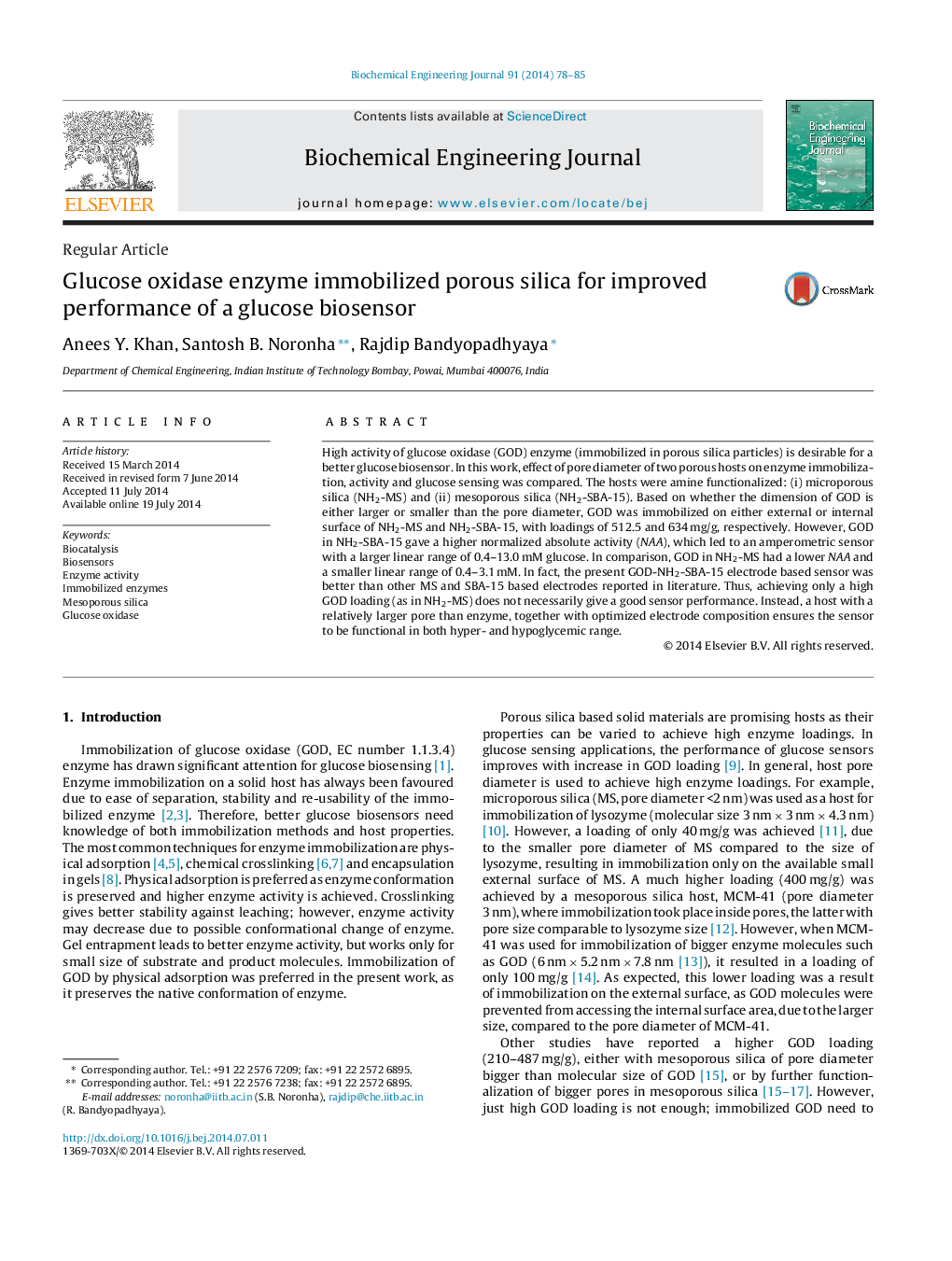| کد مقاله | کد نشریه | سال انتشار | مقاله انگلیسی | نسخه تمام متن |
|---|---|---|---|---|
| 3114 | 151 | 2014 | 8 صفحه PDF | دانلود رایگان |
• A high GOD loading and activity was achieved in NH2-SBA-15 than NH2-MS host.
• Glucose sensor with GOD-NH2-SBA-15 results in larger linear range of 0.4–13.0 mM.
• The GOD-NH2-SBA-15 sensor is suitable for diagnosis and monitoring of diabetes.
• Pore diameter higher than GOD and optimized electrode composition gives good sensor.
High activity of glucose oxidase (GOD) enzyme (immobilized in porous silica particles) is desirable for a better glucose biosensor. In this work, effect of pore diameter of two porous hosts on enzyme immobilization, activity and glucose sensing was compared. The hosts were amine functionalized: (i) microporous silica (NH2-MS) and (ii) mesoporous silica (NH2-SBA-15). Based on whether the dimension of GOD is either larger or smaller than the pore diameter, GOD was immobilized on either external or internal surface of NH2-MS and NH2-SBA-15, with loadings of 512.5 and 634 mg/g, respectively. However, GOD in NH2-SBA-15 gave a higher normalized absolute activity (NAA), which led to an amperometric sensor with a larger linear range of 0.4–13.0 mM glucose. In comparison, GOD in NH2-MS had a lower NAA and a smaller linear range of 0.4–3.1 mM. In fact, the present GOD-NH2-SBA-15 electrode based sensor was better than other MS and SBA-15 based electrodes reported in literature. Thus, achieving only a high GOD loading (as in NH2-MS) does not necessarily give a good sensor performance. Instead, a host with a relatively larger pore than enzyme, together with optimized electrode composition ensures the sensor to be functional in both hyper- and hypoglycemic range.
Figure optionsDownload as PowerPoint slide
Journal: Biochemical Engineering Journal - Volume 91, 15 October 2014, Pages 78–85
